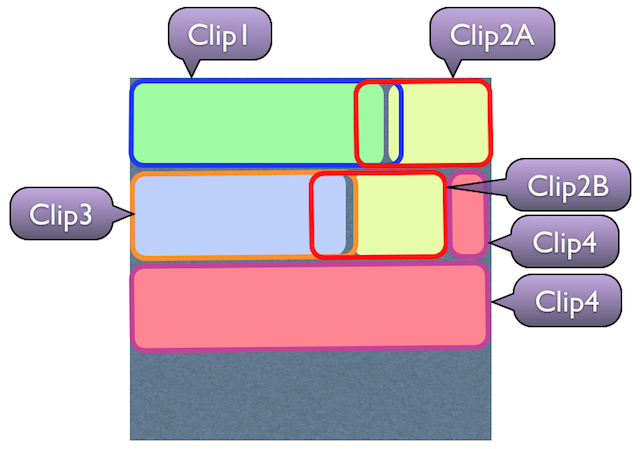Where is my footage? (part III)
Last week, I have explained how DeepMediaScan helps you visually map the footage on the disk and make repair operations much easier, faster and accurate.
But a few questions remain unanswered:
- How do you tell your repair kits what regions of the disk map should be repaired?
- What happens with disputed cells like A6?
- Which repair kit use?
DeepMediaScan “Clips”
Your Disk Map is a cell-based representation of the contents of the disk. Now we want to group cells together into “Clips”.

Looking at the Disk Map images, it’s easy to determine that biking footage occupies cells A1 to A6.
Similarly, birthday footage is in A7-A8 and B6-B7. As A6 and B5 are disputed, let’s include them also here: A5-A8 and B5-B7.
And we do the same for party and concert images:

Therefore, you just have to define 5 clips. For each clip, just select the images and drag them into Treasured.
Birthday footage is split over Clip2-A and Clip2-B, because the file was recorded fragmented. We cannot define it in one clip, because Treasured wants the images inside a clip to be consecutive. We will see later how this affects repair.
Repair Kits
Once clips are defined, we want to repair them.
As explained in part II, the clips have been recorded in 2 formats and need 2 different repair kits.
We know that Clip1 and Clip3 are in HD format, because the corresponding Disk Map cells have an HD resolution of 1280×720. The other clips are in SD, their display resolution in 640×480.
This means that we know exactly what kit to apply to what clip.
The diagram below shows that this time, we can recover all the footage.
- Once repaired with HD kit, Clip1 and Clip3 contain 100% of the original footage for biking and party.
- Once repaired, Clip2-A and Clip2-B contain 100% of the original footage for birthday. The two files can be merged together with a video editor.
- 100% or concert footage is recovered from Clip4 with SD kit. Note that it’s done in one shot, the “line-break” in the Disk Map does not divide it into two clips.

Conclusion
We have tools to recover every bit of footage present in the present, even if there is no visible file, or if files have funny names and end up not containing what is expected.
If DeepMediaScan doesn’t find it, it doesn’t exist.
If DeepMediaScan finds it, we can repair it.

